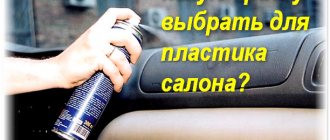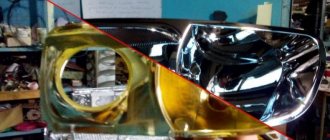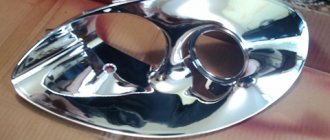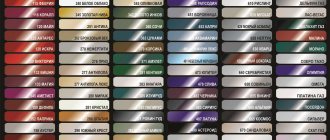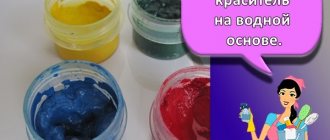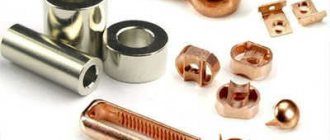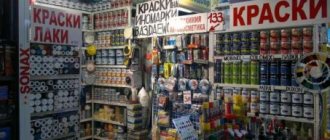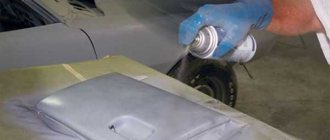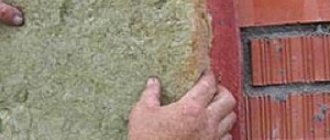Most metals react with oxygen to form hydroxyl residues. This process is called corrosion, which is the main reason for the gradual destruction of the surface of metal products. There are many ways to combat corrosion processes, one of which is chrome plating.
Many automobile parts are coated with a thin layer of this metal, which performs both a protective and decorative function, and also increases the strength of the product (in terms of this indicator, chromium is second only to iridium, uranium, tungsten and beryllium among metals). Unfortunately, chrome plating is not ideal protection - this metal also corrodes, although not as actively as iron.
And since the chromium layer is usually small (the main method of its application is galvanic), the chrome surface is quite susceptible to mechanical stress. And even a small scratch can significantly intensify the appearance of rust stains. Are there ways to restore the original appearance of chrome car parts? Of course, many effective methods are known, the most popular of which we will talk about today.
How to restore shine to chrome taps?
- If the faucet has not been cleaned for a long time, then vinegar will help you. Dampen a soft cloth with vinegar, wipe the faucet with it, and the deposit will disappear as if by magic! ...
- Suitable for cleaning chrome taps and soda. ...
- Salt will help your faucet shine. ...
- You can also use lemon.
Interesting materials:
Aspirin as a laundry bleach? When is it cheaper to buy air tickets? When is the best time to buy air tickets? Sea of Azov Russia where to relax? Where is the capital of Bangladesh? How to use white for bleaching things? Where is there more protein in plant foods? What is white noise? What is Burpee? What is gluten-free food?
Coating defects
Chrome plating is a thin layer of chromium that is applied to a metal surface, often pre-plated with a layer of nickel, through electroplating. When chrome plating plastic, that is, a dielectric, the surface is mechanically processed to create adhesion, then a preliminary conductive layer is applied. The surface becomes less vulnerable to mechanical stress, and in the case of metal, also protected from corrosion. The quality of the coating is influenced by chrome plating technology. But even the highest quality chrome can suffer various types of damage over time:
- scratches, minor roughness;
- microcracks;
- cloudiness, loss of original shine;
- plaque formation, yellowness;
- the appearance of corrosion spots.
Damage to chrome-plated elements that can be restored at home does not include: peeling of the top layer of coating or chrome along with the nickel backing, lack of chrome in recessed areas of the product or around holes. This type of defect is a manufacturing defect resulting from a violation of technology or the use of low-quality reagents. To restore such car parts, you will need to completely remove the old coating and apply a new layer of chrome. Despite the labor-intensive and costly process, do-it-yourself chrome plating is a completely feasible task. Let's look at the step-by-step restoration of all types of damage.
Corrosion removal
Chrome protects metal surfaces well from rust, but it is also susceptible to corrosion. This is facilitated by aggressive reagents used on roads in the winter.
Through corrosion, in which the chromium layer is completely destroyed, can only be restored by reprocessing the part. Also, areas where rusting of the metal has led to the detachment of the chrome layer cannot be restored.
In all other cases, to remove corrosion from parts, you can use:
- a mixture of baking soda, powdered gas stove cleaner and warm water. To prepare, dilute baking soda and powder in a 1:1 ratio, and then add water, stirring until it forms a paste;
- As a substitute for baking soda, you can use citric acid and regular salt in a 1:1 ratio. Coca-Cola can handle small areas of corrosion;
- WD-40 (colloquially called “Vedeshka”);
- specialized cleaners for chrome. For example, Soft99 Chrome Cleaner or Doctor Wax (DW8317), Chrome Cleaner from GRASS, etc. Manufacturers of the products assure that the composition of their chemical reagents and fine abrasives can not only remove oxides and cloudiness, but also create a protective film. This way you can protect the parts from further destruction. Often such products are positioned as polishing pastes for removing cloudiness and abrasions. Therefore, when there is a large amount of corrosion, it is recommended to use them as the final stage of imparting a marketable appearance.
Procedure
To clean chrome parts, foil or metal wool (steel wool) is often used; if not available, you can use a regular sponge.
Never use sandpaper. This will remove too much chrome and cause scratches, thereby damaging the parts even more. In addition, you will additionally “expose” the surface, opening up pockets of corrosion for access to oxygen and moisture.
Removing rye begins with thoroughly cleaning chrome parts and adjacent areas from dirt, bitumen stains, and grease deposits. You can use car shampoo (without wax), special products for removing tar stains, foam engine cleaner and a regular degreasing solvent.
To use commercial cleaners for chrome parts, just drop a few drops on a rag and rub the surface until it shines. If you are using your own product made from acids and salts, then you need to apply it to the surface, leaving it for a few minutes for a chemical reaction. For more effective cleaning, wipe the part with the soft side of a dishwashing sponge; You can remove rust from recesses, grooves or joints using a toothbrush. It is better to do this procedure several times. This way you can control the effect of chemical elements on the part. An overly aggressive composition left for a long time will lead to the destruction of the excess chromium layer.
Polishing
You can restore chrome elements to their original shine and remove minor scratches by polishing. As a polishing paste, you can use GOI paste, which, depending on the size of the abrasive particles, is presented in several variations (NN 1-4):
- NN 4 is the coarsest abrasive. Suitable for removing oxides and sanding deep scratches from parts;
- NN 3 – medium abrasive, which will give a smooth matte surface without roughness;
- NN 1-2 – numbers for finishing. Polishing will give the original shine and smoothness.
The number of required numbers of GOI paste depends on the degree of damage to the chrome plated part. For high-quality restoration, NN 1-3 will be sufficient. Most often, the paste can be found in bars, so when polishing it is permissible to use a couple of drops of clean motor oil. Door handles should be cleaned after polishing if any oily deposits remain on them. For other elements, engine oil will create a protective film, which will protect the chrome elements of the car from reagents. Among cosmetics for cars you can find special polishes for chrome. For example, Doctor Wax (DW8317), Chrome Polish from Sapfire, Liqui Moli Chrom-Glanz-Creme or similar products from other manufacturers.
For manual polishing, simply apply the composition to a cotton cloth or microfiber and rub the surface until shiny. The best way to polish the surface is by using a polishing machine or special polishing wheels with an adapter for a screwdriver. It is advisable to polish the part in two stages:
- felt circle at medium speed;
- felt or soft foam pad (usually black) to add a final shine. You need to polish at medium speed. To avoid overheating the surfaces of parts, do not stay in one place for a long time; Periodically the surface can be moistened with clean water.
Before polishing the chrome parts of your car, thoroughly clean the surface of dirt.
Preparation
As in any business, the main stage is the preparatory work. As you know, stainless steel has a peculiar texture, so when cleaning the surface you need to move along this structure, determining its direction. To do this, just look at the door of the household appliance and find slightly noticeable marks that show the direction of this structure. The next stage is preparing the surface for grinding, this should be done as follows:
- Unplug the refrigerator.
- Moisten its surface with water.
- Apply a mild cleaning agent to the body of the household appliance.
- Take a dry soft cloth and wipe the refrigerator along the steel texture.
- Remove any remaining dirt and cleaning agent with clean water.
- Wipe dry with a fiber cloth.
If there are greasy stains on the refrigerator, then to remove them you need to use a solution of vinegar and water:
- In a small container, mix water and vinegar.
- Soak a rag in the solution and remove any traces of grease by wiping the refrigerator along the stainless steel structure.
- Wipe dry with a soft cloth, removing any remaining solution.
Chrome plating of car parts
3 476 Share The chrome part stands out on the surface of the body with its shine.
Contents: From time to time you can wipe the part with kerosene and carefully rinse it off with warm water. Under no circumstances should substances such as kerosene, gasoline or white spirit be left on the surface, and it is better to avoid contact with soda or mineral oil altogether.
This is one of the budget tuning options - unlike airbrushing, where the entire car is repainted, chrome plating is not accompanied by fundamental changes in the car's exterior - you will get a catchy, aggressive look of the car by transforming only a small part of it - the wheels, spoiler or radiator grille. The chrome plating process allows the coating to be applied to the entire surface of the body, but such repainting has a negative impact on road driving safety - the car shines under the sun's rays, which blinds drivers of passing vehicles.
To avoid problems with the traffic police, it is rational to chrome only some elements of the body.
This article presents the technology of chrome plating at home. We will look at methods for producing chrome coatings - the use of chrome film, galvanic, chemical and catalytic chrome plating, and find out what equipment is needed for their implementation.
Methods for caring for and restoring chrome parts will also be discussed. Caring for chrome parts The chrome element is a weak point of the car body, which during operation is subject to wear and tear more than parts with a conventional paint coating.
When deciding to chrome plate a part, keep in mind that during operation of the machine it will be subject to the following negative effects:
Paint over chrome
Chrome is an extremely hard metal and a thorough surface treatment will be required before painting a chrome piece. It is necessary to bring it to a matte state - small scratches will improve the adhesion of the material. Then you should remove dust from the surface, degrease and successively apply several layers of primer:
- acidic primer, which provides rigid adhesion to the surface, since tenths of a micron are eaten into the metal;
- primary (main) primer to protect the part from corrosion and adhesion to paint;
- filler primer - necessary if you need to level the surface.
A phosphating primer is sold specifically for metal surfaces. The substance is a mixture of acid and basic primer. It can be used instead of oxidation and phosphating; the main purpose is to protect the metal for a long time. After preliminary degreasing, paint is applied to the last layer of primer.
Conclusion
If the question of how to restore a chrome part is relevant to you, then the corrosion process has probably already gone too far. To ensure that the part does not lose its attractiveness over time, you need to handle it carefully. Attentiveness and caring attitude towards chrome are the main ways to fight for its appearance.
Restoration of chrome parts
A part that has not been protected in a timely manner is difficult to restore. However, you should not give up. A little patience, good theoretical preparation, and your bumper will shine like new.
Traditional methods
Adventurous motorists are experimenting with the possibilities of upgrading chrome without complex equipment or major costs. Household tricks and recipes for restoring chrome plating are shared from garage to garage and from forum to forum.
Coca Cola
One of these recipes advises using Coca-Cola soda, which contains phosphoric acid, known as a rust converter, and soft foil.
Baking soda
A popular way to update chrome on a car is a paste of baking soda mixed with water. The composition is applied to the treatment surface with a toothbrush and polished mechanically. The recommendation is simple, but it is worth considering the abrasiveness of the composition to avoid scratches.
Other household compositions
Other folk methods recommend oven cleaners, WD-40, citric acid, and even toothpaste.
Paste GOI
A tool recognized by most car enthusiasts for giving chrome parts their original appearance is GOI paste with chromium oxide. This development of Soviet scientists is divided into 4 types of abrasive ability, from which the smallest should be selected. When working with GOI pastes, it is important to follow the following recommendations:
- apply the paste not to the polishing surface, but to the fabric with which the part will be processed (flannel is suitable);
- before applying the paste, moisten the fabric with lighter gasoline and the surface to be polished with industrial oil (for example, WD-40);
- rub the part in a circular motion without strong pressure until the desired result is achieved;
- Rinse the surface and wipe dry.
Tell us in the comments what method helped you restore the appearance of chrome elements? Perhaps this will be very useful to readers in the future. Also subscribe to our channel at
ZENE
.
Recommendations
Leading furniture manufacturers claim that it is easier to protect their products from damage in a timely manner than to restore them, and recommend:
- Use protective accessories. This is especially true for wooden countertops. Tablecloths, cutting boards, and hot pads minimize the risk of mechanical damage.
- Remove excess moisture. Wood can become deformed when exposed to water.
- Use only soft sponges and rags without an abrasive layer for cleaning. They leave micro-scratches on furniture, which will become a big problem over time.
- Choose only care products intended for this material. Compositions with aggressive and abrasive components are strictly not recommended.
It is necessary to remove stains from wooden surfaces in a timely manner, otherwise damage will appear after attempting to remove old stains.
If you are interested in how to remove small and deep scratches from various surfaces and objects, take a look at this section.
Treatment of enamel chips
Consumables
Before restoring the bathroom coating, it is necessary to pre-treat chipped enamel, if any. To do this, in addition to all of the above, you will need:
- Women's tights or fiberglass, which will be enough to apply at least 4 layers to the fistula;
- Epoxy adhesive.
Step-by-step processing technology
- We rub the chip and the area around it with Durex so that a smooth transition to the metal is formed;
- Remove dust and degrease with acetone;
- Apply an even layer of epoxy glue to the place of the chip and 3 cm beyond it;
- We put fabric caresses on top of the glue and smooth it with a brush to remove the bubbles inside.
- We repeat the process of applying the fabric as soon as the previous layer of epoxy glue has set. Each subsequent caress should be slightly larger than the previous one.
- After applying 6 layers, wait until it hardens completely and rub the surface with sandpaper.
Operating principle of polishing pastes and liquids
The relevance of today's material is due to the fact that over time, many chrome elements on a car fade, the usual shine is lost, they become darker and less attractive. To do this, it is necessary to treat them with special care and protection products, and also wash them from time to time with warm soapy water. At the same time, some of them are so small in size that in order to clean the chrome on them, it will take a lot of time and effort.
The modern chemical industry offers a variety of chrome polishes that perform excellent cleaning functions. It is used for moldings, radiator grilles and other external and internal elements. The main thing is that it remains safe for the entire paintwork of the vehicle. The main advantages of protective polishing liquid are ease of use, low abrasive properties, and deep cleaning and polishing principle of action.
Causes of rusty plaque
The main cause of corrosion on the surface of chrome-plated products is excessive force and mechanical loads. They lead to the appearance of small scratches and cracking of the surface layer of the material. This happens as follows: the metal is covered with chromium, it oxidizes due to the negative influence of oxygen and other organic substances. This is how rust appears.
It is also worth noting that metal household appliances are constantly exposed to the aggressive effects of chemical reagents (soap suds, detergents, dust formations, mold). The feeling of cleanliness and comfort is lost - the coating becomes cloudy and loses its original natural shine.
Procedure
The extent of the damage is very difficult to assess if the chrome part is not cleaned of dirt. This must be done very carefully, since the chrome film is very thin. When performing cleaning, the following rules must be observed:
- Work only in a warm room or outdoors at above-zero temperatures. Temperature changes during work are unacceptable.
- Do not use products containing salt for cleaning.
- It is forbidden to use rough rags and napkins with a corrugated surface.
First, rinse the part with warm water and then wipe with gasoline. You may need to repeat this procedure several times.
If dirty plaque remains in some hard-to-reach places, it can be removed from there with an old soft-bristle toothbrush.
To prevent corrosion from harming neighboring areas of chromium, the source of damage must be localized. This can be done using regular wax or polish.
Chromium restoration
Most beautiful elements lose their properties and appearance over time, and there are two options left: buying a new one, or restoring an old item. The last point is often used to improve images of historical values and make them more resistant to negative influences. In everyday life, people can also resort to similar methods, because sometimes it is cheaper and faster. But if the question arises of how to restore chrome yourself, then many difficulties arise. The development of modern technologies does not stand still, but there are few reasonable solutions. There are also difficulties with finding equipment and components, lack of time and patience.
And if the question arises about working with a regular faucet in the bathroom, you need to weigh the pros and cons. After all, it’s cheaper and faster to buy a new faucet than to call a specialist and overpay for repairs. And without knowledge of chemistry and physics, it is wiser not to start studying.
It is important to note that sometimes chromium reduction is not a possible process. Irreversible damage or the base on which the layer was applied under special industrial conditions is to blame.
Polishing using wheels (polishing pads)
Polishing with wheels is carried out on polishing machines using a polishing mixture (paste) or suspensions, felt polishing wheels or round brushes.
For mechanical polishing using mixtures or suspensions, there is a large variety of grinding wheels. If products are of simple shape - flat or square, they can be processed on a universal machine with a straight profile polishing wheel. For rough processing, hard and hard wheels are used, for fine processing - soft ones. The hard wheel polishes intensively, but quickly becomes greasy, especially when processing soft non-ferrous and precious metals and alloys. A soft elastic circle is ineffective in preliminary operations and, in addition, when strongly pressed against the workpiece, it is deformed and flattened.
Mechanical polishing of products with a circle coated with mixtures or suspensions is carried out as follows: first, the right and left surfaces of the product are polished from the middle, and then the surface from the opposite end in the same order. Polishing directions should be alternated - first you need to polish obliquely at an angle of 30, 45 and 60 degrees to the right and left, and then in the longitudinal direction.
Parts and products that have the shape of bodies of rotation or other complex profiles are polished mainly obliquely - to the right and to the left.
After preliminary polishing is completed, the products are subjected to finishing polishing in the longitudinal direction (first from one end and then from the other).
When polishing, the working surface of elastic wheels must be periodically lubricated with a polishing mixture, and in certain doses: if there is an excess of the mixture, the wheel will “salt” the product, and if there is not enough, the metal surface will not acquire the desired shine and the polishing wheel will quickly wear out. When lubricating the polishing wheel, it is recommended to leave approximately 1/4 of the working surface free from the polishing mixture.
The elastic circle must rotate and press against the products with a certain force, while the polished product itself must move freely in relation to the circle. Polishing using mixtures can be carried out at the periphery or the end of the wheel. The polishing wheel has only a rotational movement; the movement of products is carried out directly by hand or with a special device.
To obtain a high-quality polished surface, it is necessary to first carry out rough processing (pre-polishing) and then fine processing (final or fine polishing). The rotation speed of the wheel on polishing machines is 2000-2800 rpm. Machines with high wheel speeds are used in cases where high quality processing is required. If it is necessary to achieve a mirror finish, then polishing is carried out at lower wheel speeds.
First, polishing is done with rough felt wheels with a small amount of polishing agent, and then switches to soft felt wheels. To obtain a mirror gloss, use stacked polishing wheels made of cotton fabric or soft leather washers. The process is completed by polishing the products on a ring brush containing tufts of cotton or woolen threads instead of bristles. In this case, the thinnest polishing pastes are used, which are applied to the surface of the instrument in very small quantities.
To finalize the surface of jewelry, thread brushes - puffs - are also used.
The surface quality is also significantly influenced by the specific pressure of the wheel (polishing pad) on the surface being treated.
With increasing specific pressure, the intensity of the process increases to some limits, but its further increase reduces not only the quality of processing, but also productivity (the wheel wears out prematurely, noticeable heating of the processed products is observed). To improve the quality of the surface of products, polishing must be done with a low specific pressure; as a result, risks are less noticeable on the surface and, accordingly, the reflectivity of the metal is greater. In table 1 shows the modes of mechanical polishing with an elastic circle coated with paste. Table 1. Modes of mechanical polishing with an elastic circle coated with paste
| Polished material | Peripheral speed, m/s | Specific pressure, MPa |
| Steel, nickel | 30—35 | 1-2 |
| Copper, precious metals | 20—30 | 0,3—0,8 |
| Aluminum and its alloys | 18—22 | 0,1—0,4 |
| Plastics | 12—15 | 0,1—0,2 |
Repair of deep cracks
How to remove scratches on a bumper with your own hands if they created dents or damaged not only the paint, but also the plastic.
For those who scratched the bumper in this way, there is the following repair algorithm:
- Work begins by removing the damaged part and thoroughly cleaning it of dirt.
- Next, the entire area is treated with a grinding wheel, and hard-to-reach places with sandpaper (two pieces), everything is wiped with a dry cloth and degreased.
- Then a special fiberglass tape must be glued to the surface of the bumper.
- The next step is to mix a special automotive putty and thickener. Once you have achieved a homogeneous mass, the mixture is evenly applied with a special device onto the already glued tape in one layer and sanded; for these purposes it is better to use a grinding wheel at low speeds.
- Everything is wiped with a dry cloth and a new layer is applied, which is cleaned in the same way as the first, after drying.
- Next, the damaged surface must be primed. In this case, the soil is also applied in two layers, first the first, it dries, and then the second.
- The primed surface should be lightly sanded with sandpaper and wiped with a dry cloth.
- After this, the entire bumper begins to be painted with selected paint from a spray bottle. This process is no different from the one described above for repairing medium cracks.
- The final touch is polishing the surface, but before that the bumper must dry well in a warm place without draft or wind.
IMPORTANT. Some experts recommend first applying one layer of primer to the damaged surface, and then applying putty and covering it all again with primer
In fact, this method will also help get rid of the crack, but it will take more time.
If a car enthusiast scratches the bumper, how to remove scratches is described above. There is nothing complicated about this, you just need to follow certain instructions and do it slowly.

